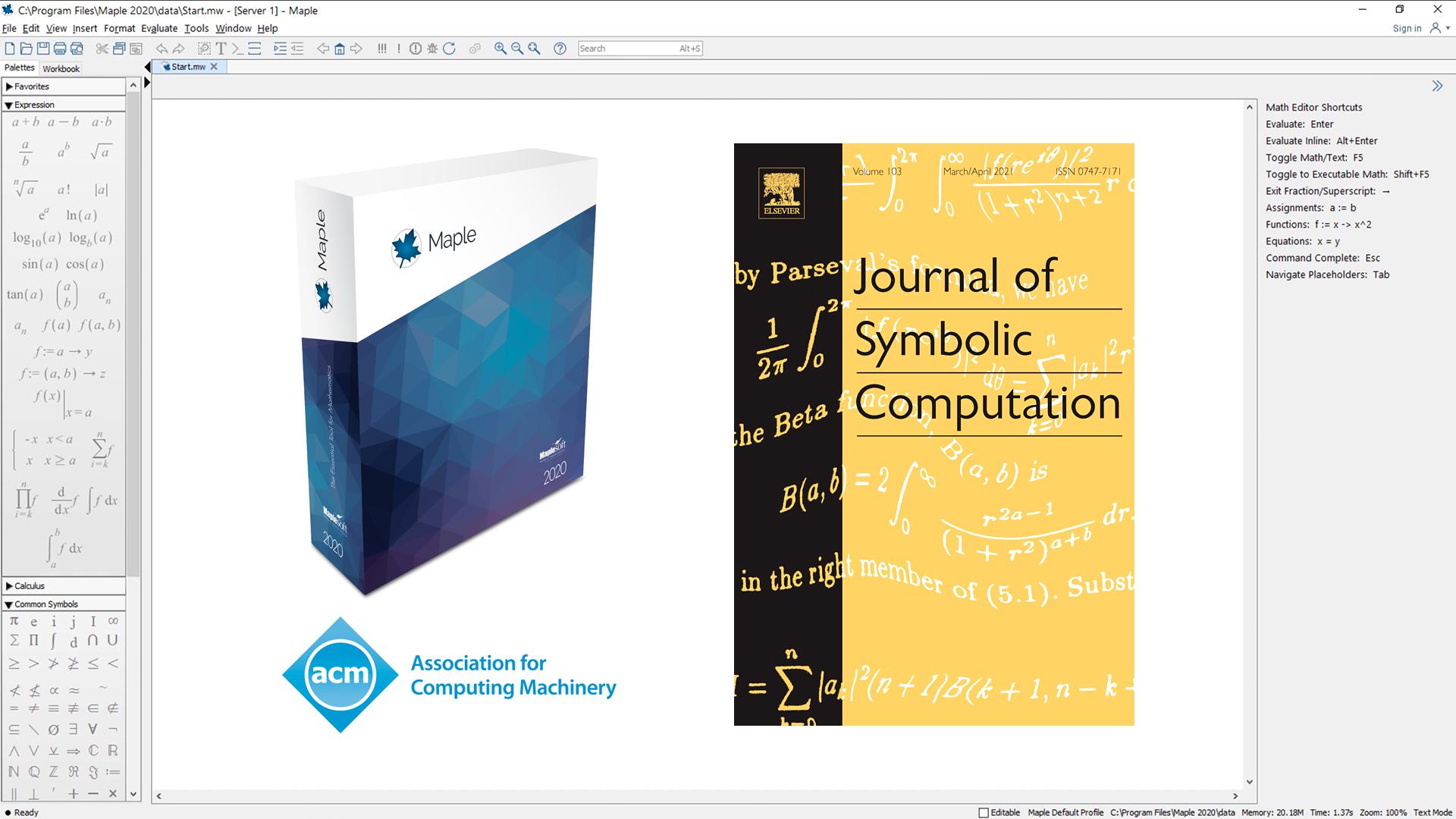By David Murphy
A KAUST-designed symbolic algorithm to solve nonlinear ordinary differential equations (ODEs) has been selected for inclusion in the current version of the computer algebra system (CAS) Maple 2020. The global symbolic and numeric computing software system—developed by the Canadian company Waterloo Maple (Maplesoft)—is widely used by scientists, engineers, and researchers to analyze, visualize, and solve mathematical problems.
The algorithm, designed by Dominik L. Michels, Assistant Professor of Computer Science and Applied Mathematics, and his Computational Sciences Group (CSG) checks if a nonlinear ODE can be reduced to a linear one by a point transformation of the dependent and independent variables. It is based on a construction of the Lie point symmetry algebra and on the computation of its derived algebra.
“Based on this, the differential Thomas decomposition is exploited and allows not only to test linearizability but also to generate a system of nonlinear partial differential equations that determines the point transformation and the coefficients of the linearized equation,” Michels explained.
“Getting our algorithm integrated into Maple 2020 is a great success within our industrial outreach activities,” noted Michels of the algorithm’s inclusion. “Only the most prominent computer algebra results are implemented in Maple, the market leader for symbolic computation,” he added.
The algorithm was also recognized with an award by the Association for Computing Machinery (ACM) Special Interest Group on Symbolic and Algebraic Manipulation (SIGSAM). The ACM SIGSAM is regarded as the leading academic community within the field of computer algebra and symbolic computing.
“This algorithm, based on our ACM SIGSAM award-winning research paper, and a special issue publication in the Journal of Symbolic Computation, was chosen by Maplesoft for its ability to extract important features of exact linearizability of ODEs. Our new so-called "IsLinerizable-technique" is an important precursor to solving ODEs before having to use more expensive methods,” Dmitry A. Lyakhov, a postdoctoral fellow in the CSG, noted.
“Differential equations are ubiquitously used everywhere in mathematical modeling of real-world phenomena,” he added. “There is always a demand for novel methods to solve ODEs. The most useful algorithms are typically implemented in CAS software for mass usage.”
Solving one of the biggest challenges in mathematics and computational sciences
According to Michels, the ability to solve nonlinear differential equations remains one of the most important and practical research challenges in applied mathematics and computational science. Differential equations are widely used in a host of computational simulations due to the universality of these equations as mathematical objects in scientific models.
“Numerical methods became important techniques which allow us to substitute expensive experiments by repetitive calculations on computers,” Michels explained.
“Next to numerical computations, the architecture of digital computers can also complete exact computations with mathematical expressions. This allows mathematicians and researchers to avoid repetitive operations with mathematical expressions that were previously done by hand on a paper sheet. Also, they can often improve the accuracy and efficiency of numerical simulations by allowing for exact computations in contrast to numerical approximations. It gives rise to the mathematical field known as computer algebra or symbolic computation.
Computer algebra also gives new life to the classical approach of the 19th-century Norwegian mathematician Sophus Lie by studying group symmetry properties of differential equations.
Symmetry group analysis is the primary tool, for example, for constructing particular solutions for partial differential equations and parameter reduction.
The algorithmic theory of Lie groups also enhances numerical methods by preserving the properties of the underlying differential equations. Symplectic and Lie group integrators have shown a wonderful interrelation between deep mathematical theory and practical simulations."
CSG’s research mission at KAUST
The core research aim of KAUST CSG is to enable accurate and efficient simulations for scientific and visual computing. Based within the KAUST Visual Computing Center, the group regularly develops novel principled computational methods based on solid theoretical foundations. They also contribute to a broad range of topics covering algorithmics, artificial intelligence and machine learning, computer graphics and physics-based modeling, differential equations, mathematical modeling, and numerical analysis.
“In our work, we regularly connect analytical and numerical approaches to combine the best of both worlds,” Michels summarized.

